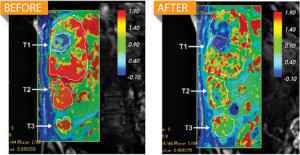Eyesight restoration seems to be one of the most buzzing subjects in medical technology this days. Lots of new discoveries have been made in this field lately. This time, researchers at Weill Cornell Medical College in New York have successfully decoded the retain’s neural code for brain communication, and using a novel prosthetic retina restored vision to the blinds.
Two scientists at Weill Cornell Medical College made the new discovery possible. They are Dr. Sheila Nirenberg, a professor in the Department of Physiology and Biophysics and in the Institute for Computational Biomedicine at Weill Cornell and Dr. Chethan Pandarinath, a graduate student with Dr. Nirenberg and is currently a postdoctoral researcher at Stanford University.
The duo decoded retinal code of a mouse and used the information in a device to restored vision to the mice. Dr. Sheila Nirenberg, along with her student Dr. Chethan Pandarinath, implemented mathematical equations (the code) on a encoder chip and combined it with a mini-projector. The encoder converted the images that entered the eyes into streams of electrical impulses, and the mini-projector converted the electrical impulses into light impulses. These light pulses then drove the light-sensitive proteins, put in the ganglion cells, to send the code to the brain.
The team tested two prosthetic systems on the mice – one with the code and one without it. The system with the code has been successful in restoring vision of the mice to near-normal levels.
Dr. Nirenberg explained, “Incorporating the code had a dramatic impact. It jumped the system’s performance up to near-normal levels — that is, there was enough information in the system’s output to reconstruct images of faces, animals — basically anything we attempted. It’s an exciting time. We can make blind mouse retinas see, and we’re moving as fast as we can to do the same in humans. This is the first prosthetic that has the potential to provide normal or near-normal vision because it incorporates the code.“
The researchers were also been able to decode the neural code for the monkey retina, which is identical to that of a human. The team hoped to use the information to make a prosthetic device to restore vision for humans pretty soon.
This breakthrough has been reported in the Proceedings of the National Academy of Sciences (PNAS) on August 13.
Source : Weill Cornell Medical College, PNAS
Thanks To : MSN
[ttjad keyword=”hot”]



